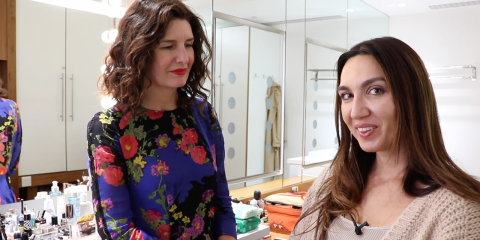Endometriosis involves tissue which normally lines the inside of the womb, being found in the muscle of the womb or outside of it. Instead of being shed each month, it can build up around other organs, such as the bowel or bladder. This causes scarring that can ultimately lead to pain or infertility. It can affect a woman at any stage of her life.
The symptoms of endometriosis are varied. Whilst some women are badly affected, others might not have any noticeable symptoms. There is also no apparent correlation between the severity of symptoms and the extent of the disease, as many women who have mild symptoms can end up having wide spread disease, and vice versa.
What is the cause of endometriosis?
The cause of endometriosis is not yet fully understood. We know it has a slightly higher chance of occurring if you have a mother or sister with the condition, but the main cause is likely to environmental or, in other words, non genetic.
One possible cause could be some of the womb lining flowing up through the fallopian tubes and embedding itself on the organs of the pelvis, rather than leaving the body as a period. Another hypothesis is a problem with the immune system that means the body’s defence system goes into over drive and creates inflammation. Or cells that belong to the lining of the womb spreading to other parts of the body through the blood and lymphatic system.
It’s likely the condition is caused by a combination of all these different factors.
What are the common symptoms of endometriosis?
Common symptoms include painful or heavy periods, pain during sex, or pain with bowel movement or urination.
Sometimes the pain occurs at other phases of the menstrual cycle and can be incredibly debilitating. Many women need time off work, and are unable to do normal activities. Because the condition is partially associated with inflammation, which is when the body’s defence mechanisms go into over drive, management starts off with alleviating inflammation through lifestyle measures. These include diet, exercise, stress relief and reducing your exposure to endocrine disruptors in any products you may be using. It is also vital to cut out smoking and alcohol.
If this isn’t enough, then there are a whole range of medical interventions that can be used, that vary between contraceptives such as the pill or Mirena coil, to surgery.
Read the full article…












































